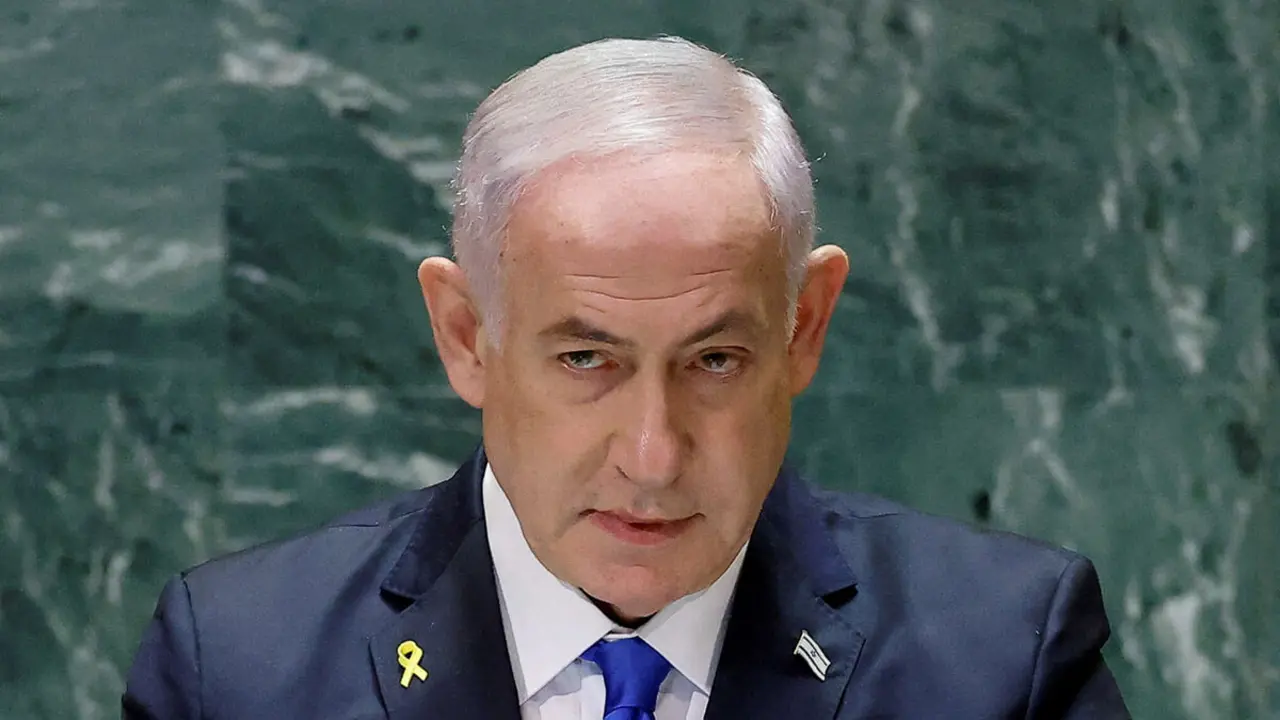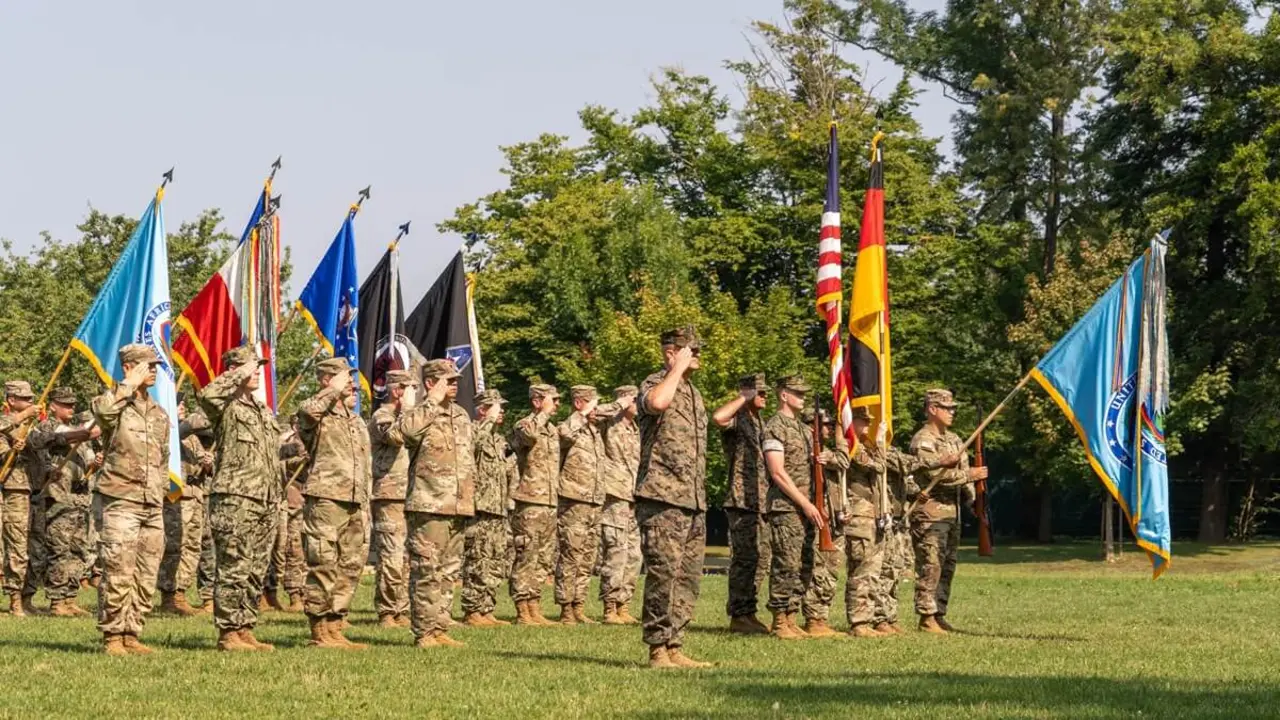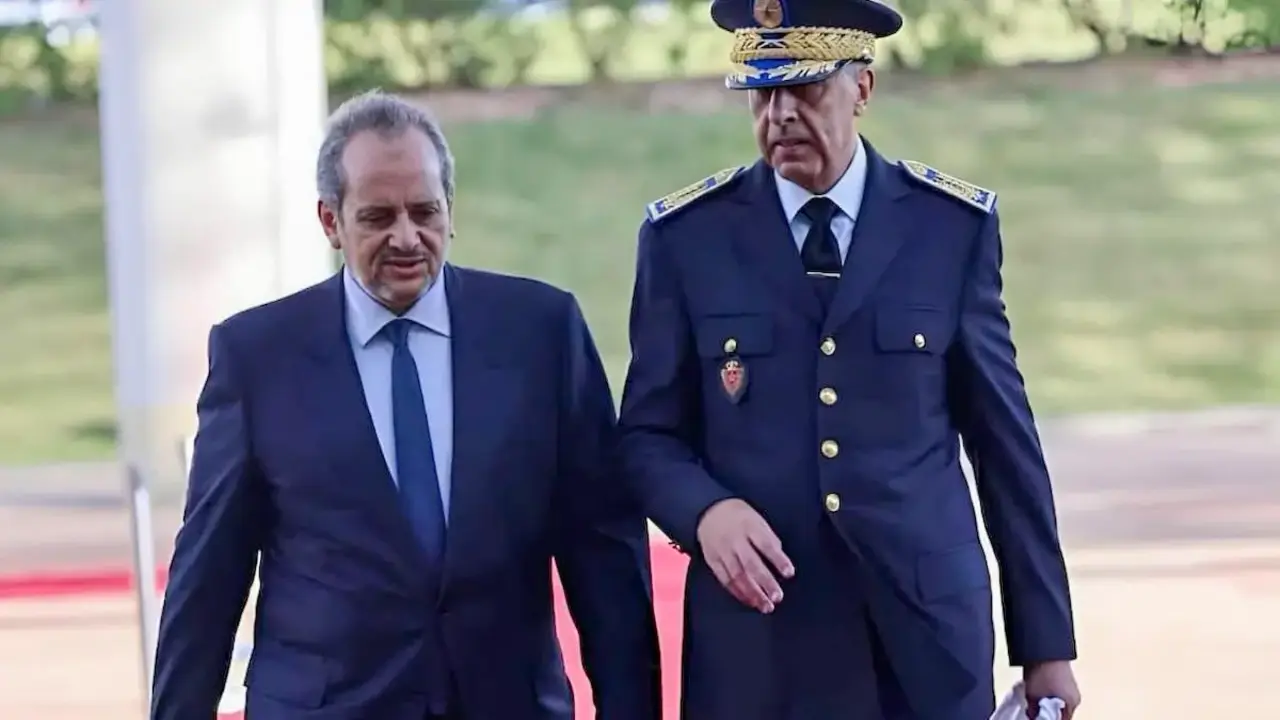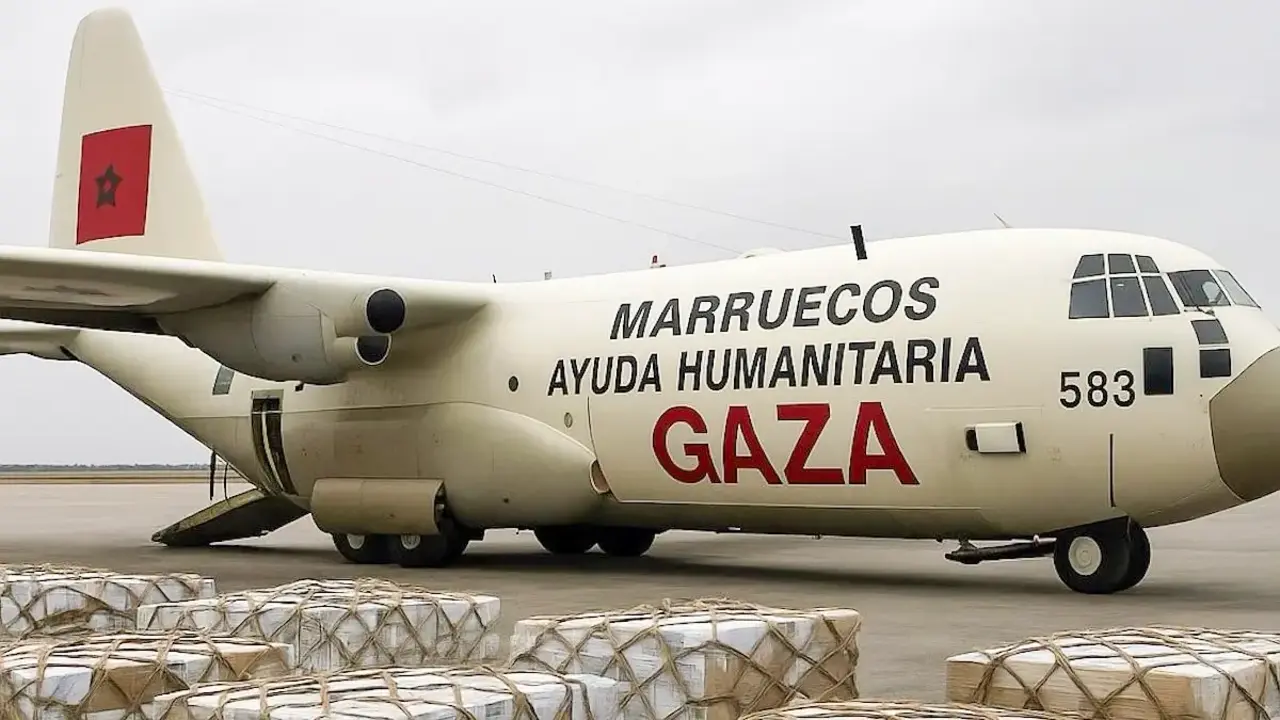King Felipe VI inaugurates the new Ariane 6 factory at Airbus's Getafe plant
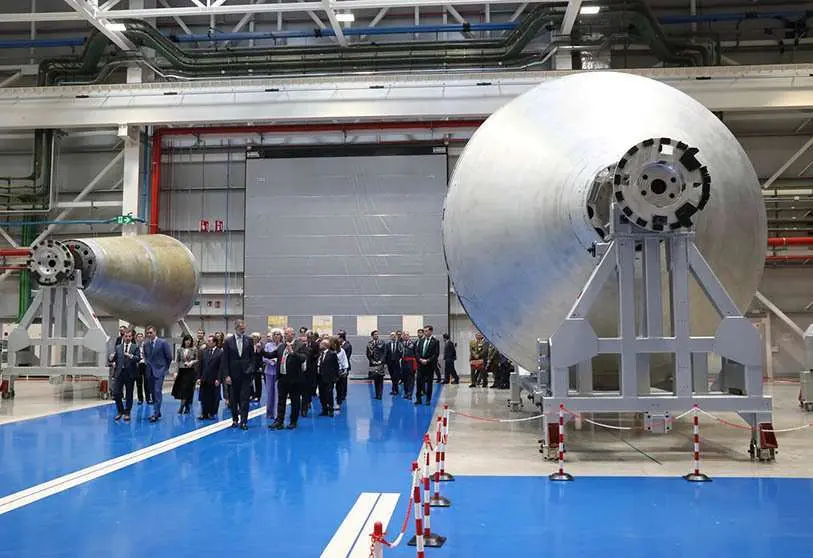
King Felipe VI has inaugurated the new facilities that Airbus has erected in its large plant in Getafe, a town near Madrid where the European industrial corporation has centralised many of the different production and assembly lines of aerospace structures that it used to house in the outskirts of the Spanish capital.
The events held on 13 March were attended by Airbus CEO, Frenchman Guillaume Faury, the President of Airbus in Spain, Alberto Gutiérrez, and the Spanish Prime Minister, Pedro Sánchez, who was flanked by his Ministers of Foreign Affairs and Defence, José Manuel Albares and Margarita Robles, respectively.
Located south of Madrid, the Getafe plant has become the third largest and most important Airbus aerospace centre in Europe - after Toulouse (France) and Hamburg (Germany) - as it houses manufacturing and assembly lines for the European multinational's main business areas: commercial and military aircraft, helicopters and, now, space systems.
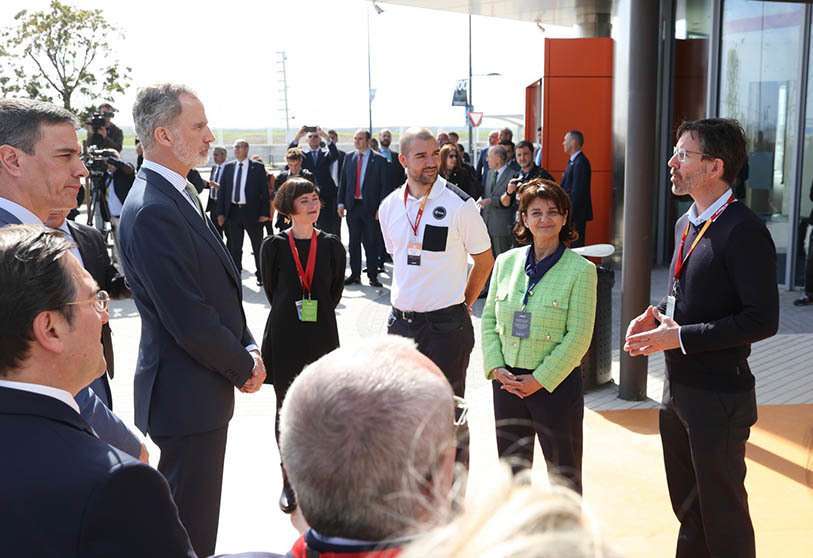
The large building that houses a large part of the Airbus space component in Spain follows the latest generation Industry 4.0 concept. At a cost of around 120 million euros, it has a total surface area of 36,000 m2 distributed over a large area dedicated to the design, production and integration of satellites and their on-board equipment. An upper space groups together offices, meeting rooms and rest areas.
But the largest work area is devoted to the manufacture of large structures for space rockets. It occupies 22,000 m2 and is designed for the automated mass production and assembly of the large carbon fibre structures that will make up the future European launcher Ariane 6, whose maiden flight is currently scheduled for the end of this year.
At the official opening ceremony of the new headquarters, the Airbus CEO confirmed that the company will manufacture "part" of the Ariane 6 launcher in Getafe, which will be "essential" to guarantee independent European access to space, "something that is by no means assured", he stressed.
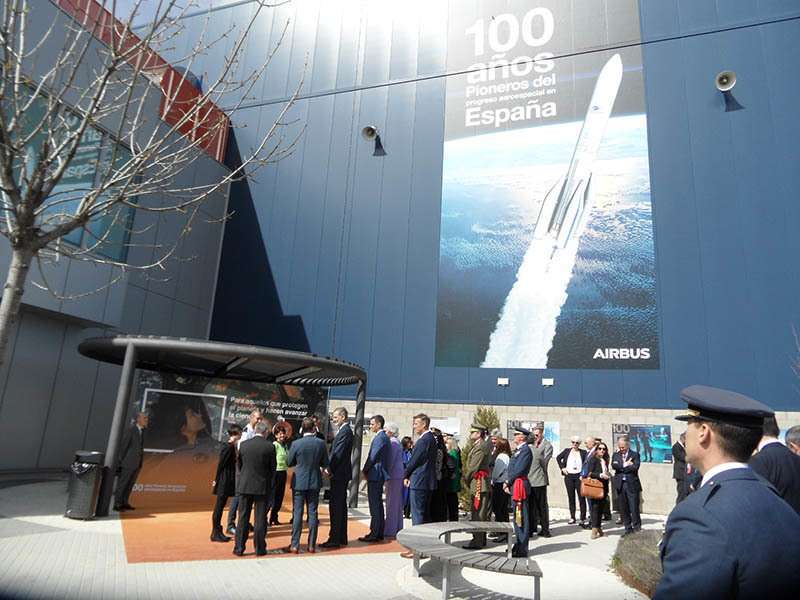
Guillaume Faury met on the afternoon of 13 March at the Moncloa Palace with President Sánchez, who, according to a statement from the Spanish Prime Minister's Office, stressed the need for Airbus to "increase the industrial workload in Spain, investment in R&D&I and intensify Spanish participation in space programmes".
Disposable and non-reusable, the Ariane 6 is intended to compete with the US Falcon 9 reusable rocket in terms of cost, reliability and performance. From Guillaume Faury's perspective, the entry into service of the Ariane 6 is "vital for Europe to be able to launch its own satellites into space".
In the same area of the new building, Airbus also produces payload adapters for other rocket models, structures for attaching satellites to rockets and releasing them once they have reached orbit. For example, for the Vega C of the Italian company Avio; the Falcon 9 of the American company SpaceX; and the H3 of the Japanese corporation Mitsubishi Heavy Systems, whose maiden flight on 7 March failed due to the malfunction of one of its engines.
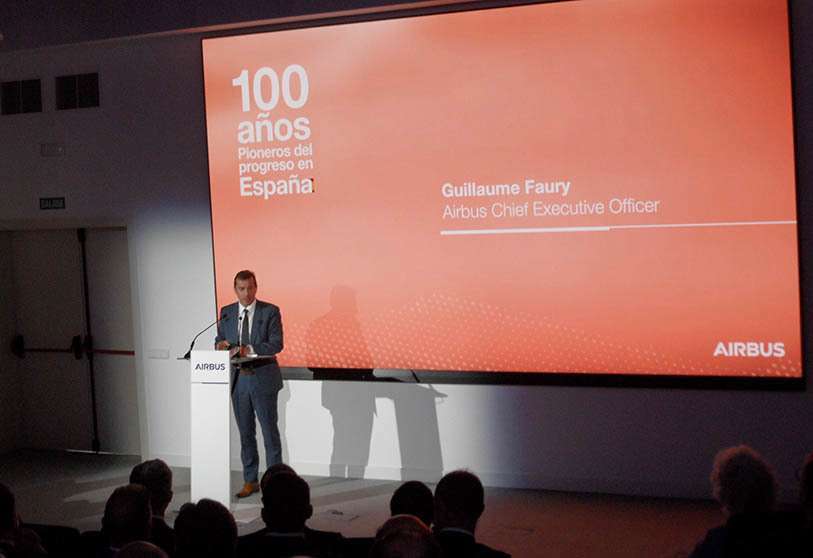
The satellite manufacturing area has a surface area of 14,000 m2. It has different work areas and the largest clean room in Spain for satellite integration and testing. The Airbus CEO stressed that Spain "is now one of the few countries in the world capable of manufacturing an entire satellite".
One of the devices that will come to life in Getafe is the LSTM, the first satellite of the European Union's Copernicus constellation, which is being developed and built at the recently inaugurated facilities. Guillaume Faury stressed that the new factory "reinforces" the role of Airbus as "the largest manufacturer of satellite systems in Spain", while at the same time "consolidating" the role of the European industrial corporation as a satellite prime contractor and "a driving force in the Spanish space sector".
The Ministry of Defence was well represented at the inauguration, possibly because it is one of Airbus' largest customers in Spain, manufacturing and assembling combat aircraft, helicopters, transport aircraft and other equipment for the Spanish Armed Forces.
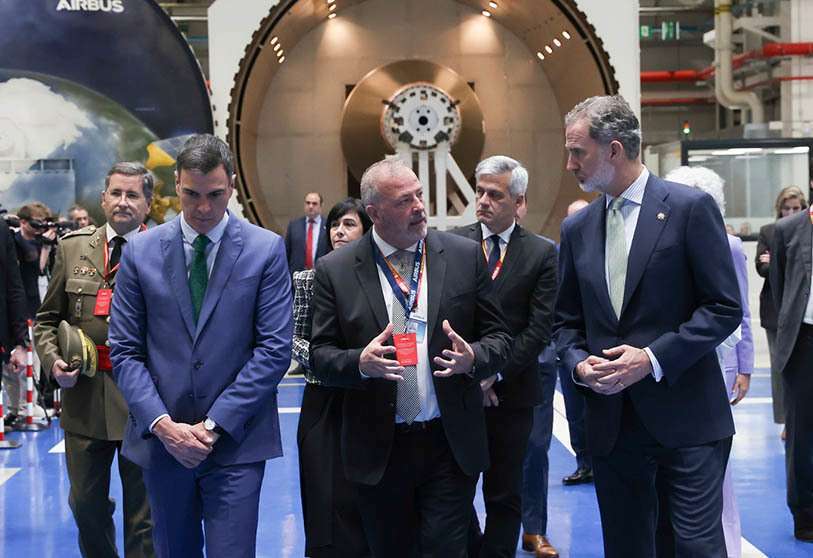
In addition to the Minister, Margarita Robles, the Secretary of State for Defence, Amparo Valcarce; the Chief of Defence Staff, Admiral Teodoro López Calderón; the Chiefs of Staff of the Air and Space and of the Army, General Javier Salto and Amador Enseñat, respectively; the 2nd Chief of Staff of the Navy, Admiral Carlos Martínez-Merello; and the Director General of Armament and Material, Admiral Aniceto Rosique, were also present.
Also in attendance were the Secretary General of Defence Policy, Admiral Juan Francisco Martínez Núñez; the Director General of Defence Policy, Lieutenant General of the Army Fernando López del Pozo; and the Director General of the National Institute of Aerospace Technology (INTA), Lieutenant General of the Air Force Julio Ayuso. From other areas of the Administration, the Secretary General for Economic Affairs and the Director of the Department of National Security, Manuel de la Rocha and General Miguel Ángel Ballesteros, respectively.
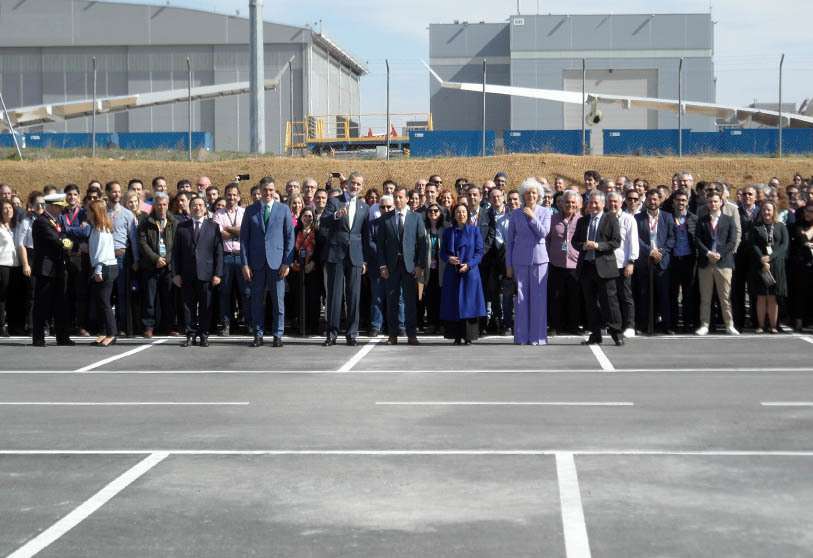
Among the Airbus executives were the vice-president of Airbus Military Aircraft, Frenchman Jean-Brice Dumont, and the CEO of Airbus Helicopters in Spain, Fernando Lombo. Also present was Amparo Moraleda, Spain's representative on the Airbus Board of Directors. Absent, however, was the head of Airbus Space Systems, also French, Jean-Marc Nasr, the head of the director of the recently inaugurated facilities, the Spaniard Luis Guerra. Among the executives attending from Spanish industry were the president of TEDAE, Ricardo Martí Fluxá; the director general of the CDTI, Javier Ponce; and the director general of Hisdesat, Miguel Ángel García Primo.
The inauguration of the Airbus space facilities in Getafe is part of the commemorative acts of the centenary of the foundation of the company Construcciones Aeronáuticas, S.A. (CASA), created on 3 March 1923 by the pilot José Ortiz Echagüe and today considered as the driving industrial company of the national aerospace sector.

CASA began its space activities in 1966, at the same time as it undertook the development of the twin-engine C-212 Aviocar transport aircraft, "a commercial success, and later a family of medium transport aircraft," said Alberto Gutiérrez. In 1971 it absorbed the company Hispano Aviación and became the first Spanish company in the aeronautical sector. In 1972 it became a partner in the Airbus project and in 1992 it became a state-owned company under the umbrella of the National Institute of Industry (INI).
CASA and the German company DASA merged in June 1999 in a minority situation for the Spanish company. A few months later, in October of the same year, DASA merged with the French Aerospatiale-Matra and in July 2000 the European aerospace and defence group EADS was created. In the last two decades it has undergone different evolutions and today it is called Airbus Group, the Spanish State's shareholding through SEPI is 4.12% and it is listed on the stock exchange.


